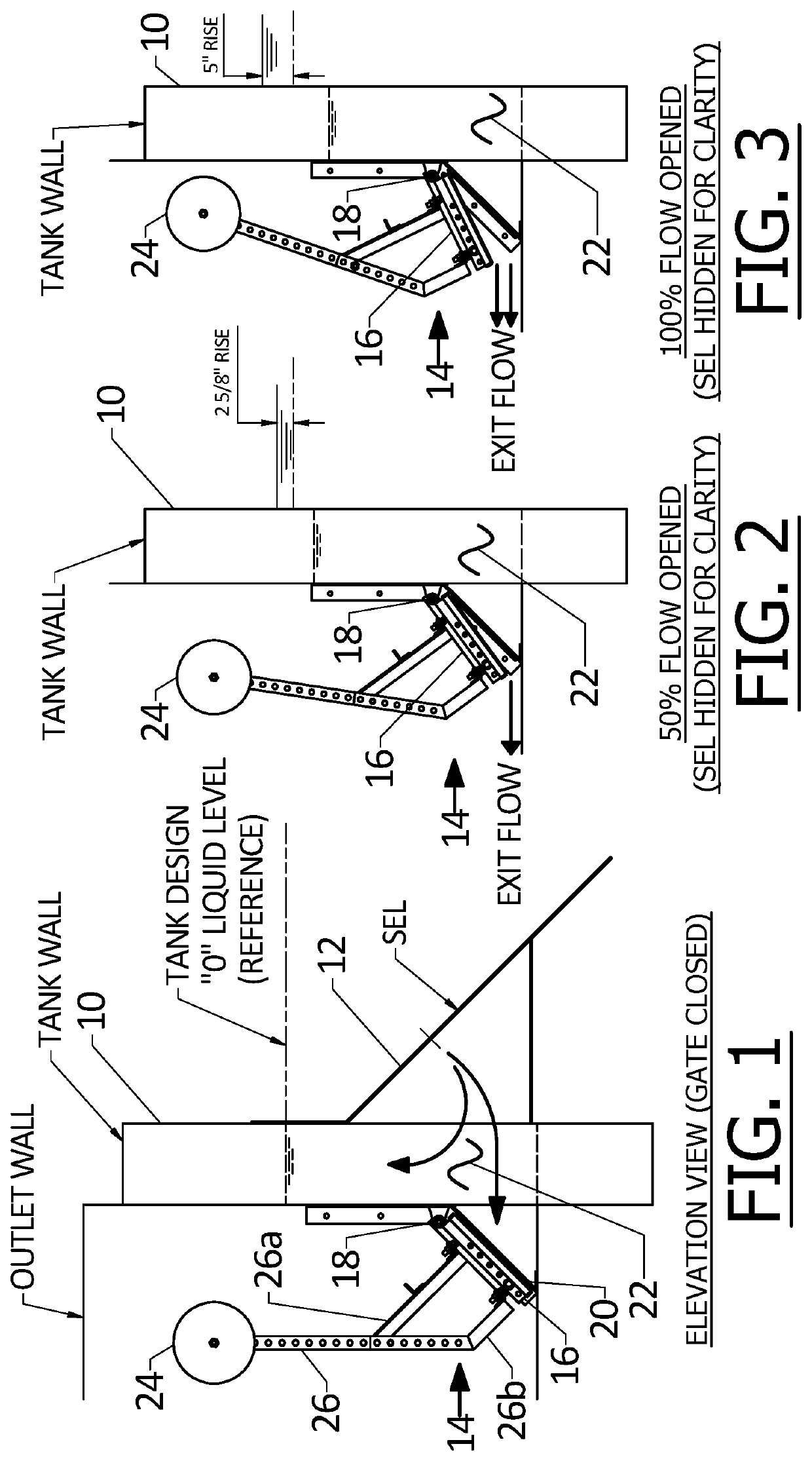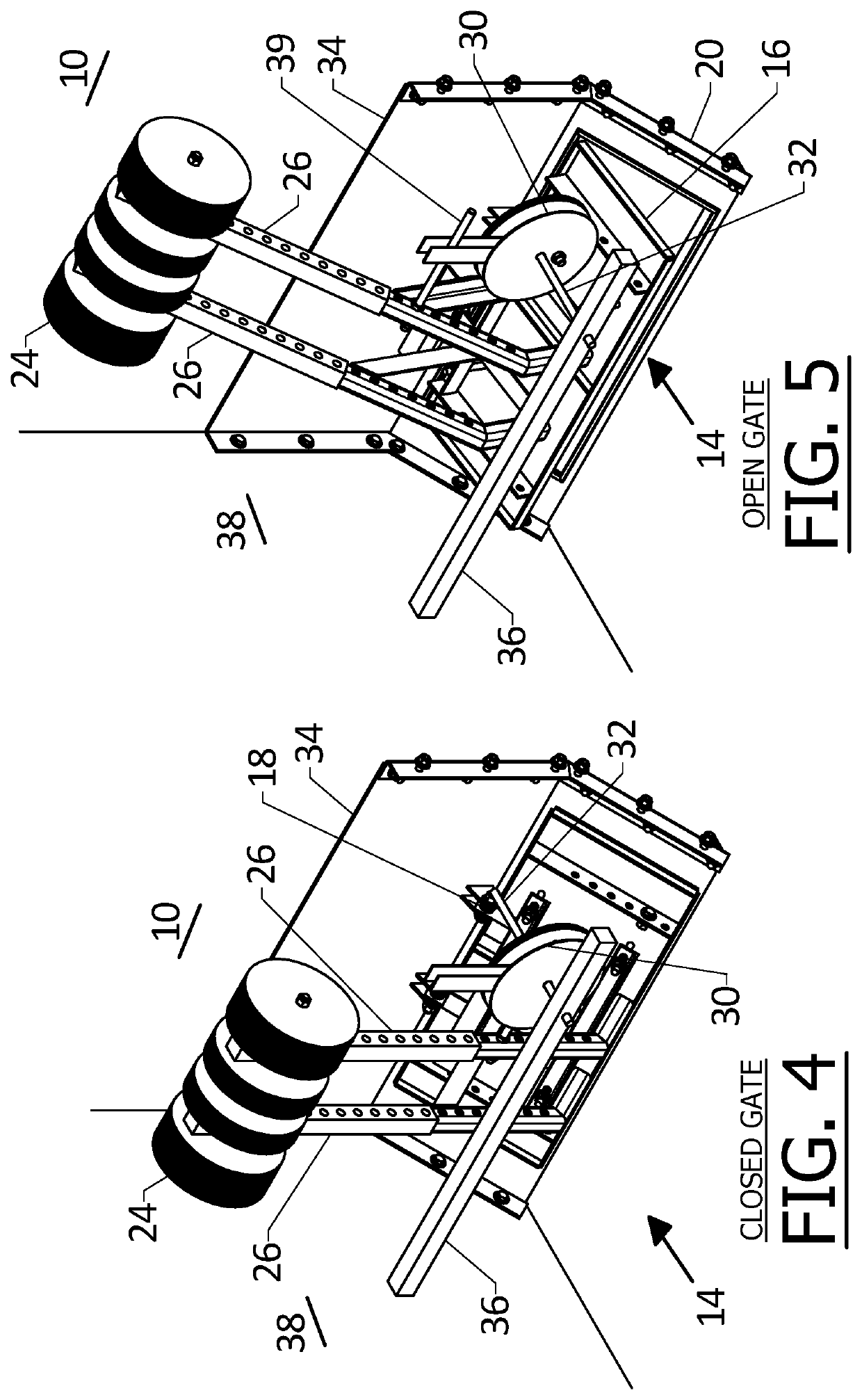Level Control System for a Liquid Filled Basin
a level control system and liquid filling technology, applied in the direction of level control, sewer system, construction, etc., can solve the problem of the gate flap being initially opened, and achieve the effect of less closing moment, less closure force, and reduced opening force on the ga
- Summary
- Abstract
- Description
- Claims
- Application Information
AI Technical Summary
Benefits of technology
Problems solved by technology
Method used
Image
Examples
Embodiment Construction
[0017]In the drawings FIG. 1 shows the tank or basin liquid level at design level, noted as zero. The basin wall is shown at 10. A submerged effluent launder (SEL) is indicated at 12, which can be similar to that shown in U.S. Pat. No. 9,919,244, withdrawing basin liquid from below the surface via a multiplicity of small openings. The SEL 12 is shown in FIG. 1 (but not in FIGS. 2 and 3, for clarity), and liquid is nearly always flowing into the SEL. The SEL is a headloss inducing device, in that it has submerged apertures that can only receive liquid at a limited rate. The SEL acts as a “choke” on the flow out of the tank. Higher head directly upstream of the SEL will naturally increase flow into the SEL, and vice versa but to a limited extent.
[0018]Liquid collected in the SEL flows to a flap gate 14 that has a gate flap 16 hinged at 18 to fixed structure on the wall 10 and which closes against a valve closure seat 20. In FIGS. 1 to 3 an intermediate chamber 22 is shown between the ...
PUM
 Login to View More
Login to View More Abstract
Description
Claims
Application Information
 Login to View More
Login to View More - R&D
- Intellectual Property
- Life Sciences
- Materials
- Tech Scout
- Unparalleled Data Quality
- Higher Quality Content
- 60% Fewer Hallucinations
Browse by: Latest US Patents, China's latest patents, Technical Efficacy Thesaurus, Application Domain, Technology Topic, Popular Technical Reports.
© 2025 PatSnap. All rights reserved.Legal|Privacy policy|Modern Slavery Act Transparency Statement|Sitemap|About US| Contact US: help@patsnap.com



